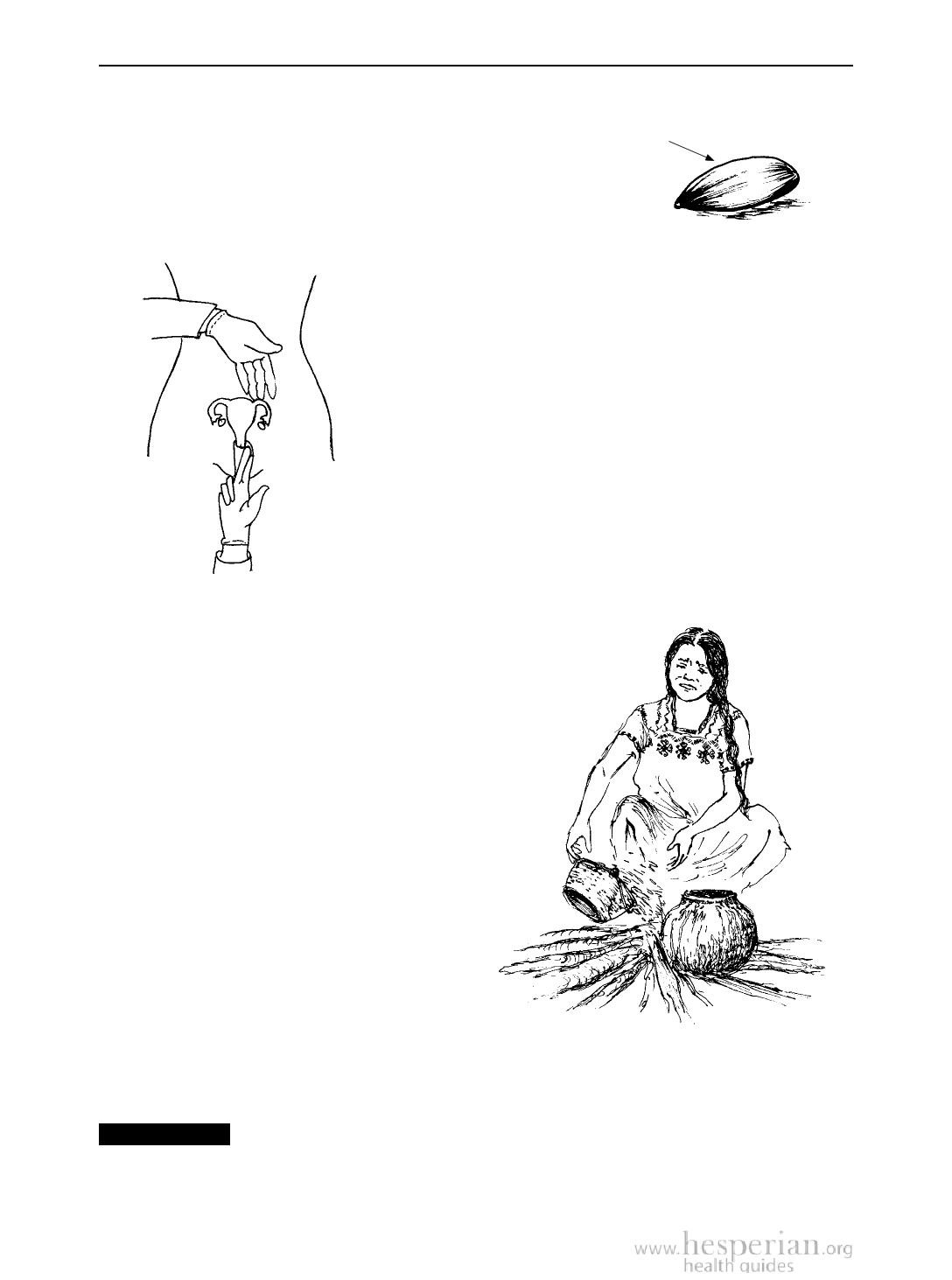
538 Health Care Skills
5. Feel her tubes and ovaries. If these are normal, they will be hard to feel. But
if you feel any lumps that are bigger than an almond (this size)
or that cause severe pain, she could have an infection or other
emergency. If she has a painful lump, and her monthly
bleeding is late, she could be pregnant in the tube. She
needs medical help right away.
6. Move your finger and feel along the inside of the
vagina. If she has a problem with leaking urine or
stool, check for a tear (see page 370). Make sure
there are no unusual lumps or sores.
7. Have the woman cough, or push down as if she
were passing stool. Watch to see if something
bulges out of the vagina. If it does, she could have
a fallen womb or fallen bladder (see page 131).
8. When you are finished, clean and disinfect your
glove (see page 527). Wash your hands well with
soap and water.
Caring for Burns
Burns are a common injury for women and
children (see page 394). All burns should first
be cooled for 15 minutes with ice, cold water,
or cloths soaked in cold water. After cooling,
treatment depends on how serious the burn
is. It is very important to keep burns as clean
as possible. Protect them from dirt, dust, flies,
and other insects. For better healing, never put
grease, fat, animal skins, coffee, herbs, or stool
on a burn. It is important for persons who
have been burned to eat body-building foods
(protein). There is no type of food that needs
to be avoided.
There are 3 basic kinds of burns:
1. Minor burns (1st degree)
These burns do not form blisters, but the skin will get darker or red. After cooling,
no other treatment is needed. Use aspirin or paracetamol for pain.
IMPORTANT Wash your hands carefully before caring for burns to prevent infection.
Where Women Have No Doctor 2012